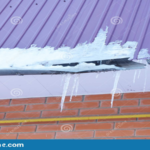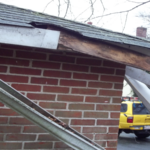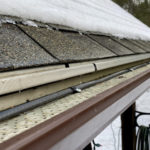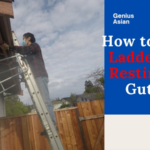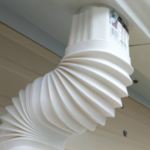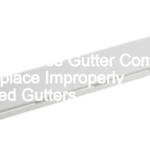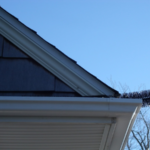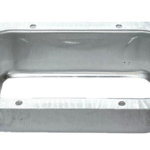One factor to consider when determining how far apart to install gutter supports is the weight of the gutters themselves. Heavier gutters will require more supports than lighter gutters. Additionally, the size of the supports themselves will affect how far apart they need to be installed. Larger supports can be installed further apart than smaller supports.
How far apart should gutter supports be?
Gutters are one of the most important elements of your home’s exterior, and they need to be properly installed and maintained in order to function properly. One of the most important aspects of gutters is the spacing of the supports. The supports should be spaced evenly along the length of the gutter, and they should be installed at the correct spacing for your particular gutter system.
The spacing of the supports will depend on the type of gutter you have. Most gutters will have a support every two feet or so. However, some gutters may have a support every four feet. The important thing is to make sure that the supports are evenly spaced along the length of the gutter. This will ensure that the gutter can handle the weight of the water when it is full, and it will also help to prevent the gutter from sagging over time.
If you are unsure of the spacing of the supports for your gutter system, you can always consult with a professional. They will be able to give you the proper spacing for your gutters, and they can also help you to install the supports correctly.
How far apart should cast iron gutter brackets be?
Cast iron gutters and downspouts have been used for centuries on homes and buildings because of their strength and durability. Although cast iron is a strong material, it is also a brittle material that can break if not installed properly. One of the most important installation considerations for cast iron gutters is the spacing of the brackets that support the gutters.
The spacing of the brackets is important because it affects the overall strength and stability of the gutter system. If the brackets are too far apart, the gutters will be more likely to sag or collapse. If the brackets are too close together, the gutters will be more likely to leak.
The spacing of the brackets also affects the appearance of the gutters. If the brackets are too far apart, the gutters will have a sagging appearance. If the brackets are too close together, the gutters will have a cluttered appearance.
The spacing of the brackets should be based on the width of the gutters. Most cast iron gutters are available in widths of 4 inches, 6 inches, and 8 inches. The brackets should be spaced at intervals of 12 inches for 4-inch gutters, 18 inches for 6-inch gutters, and 24 inches for 8-inch gutters.
How far apart should downpipe brackets be?
There is no definitive answer to this question as the distance between downpipe brackets will vary depending on the size and type of downpipe being used, as well as the specific installation requirements. However, as a general rule of thumb, it is recommended that downpipe brackets be spaced no more than 1.8m apart.
Do you need gutter guards with 6 inch gutters?
If you have gutters that are six inches or less, you probably don’t need gutter guards. The idea behind gutter guards is to keep large debris, like leaves and twigs, from clogging up your gutters. But if you have small gutters, there’s not much that can fit in there to clog them up in the first place. So, unless you have a specific reason for wanting gutter guards (like if you have a lot of trees near your home and you want to be extra cautious), you probably don’t need them.
Do gutter hangers go under drip edge?
Gutter hangers attach gutters to the eaves of a roof. They come in a variety of sizes and shapes to accommodate different gutters and roof styles. Many gutter hangers have a plastic or metal base that is nailed or screwed into the eaves, and a metal clip or bracket that holds the gutter in place. Some hangers are designed to be installed under the drip edge, while others are designed to be installed over the drip edge.
How much should a metal gutter slope downward per 10 of Span?
A metal gutter should slope downward at a rate of approximately 1/8 inch per 10 feet of span. This allows for proper drainage and prevents water from pooling in the gutter, which can lead to corrosion or other damage. The slope can be achieved by installing brackets at the proper spacing, or by using a gutter hanger that is adjustable.
What is the ideal fall for a gutter?
There are a few things to consider when it comes to the ideal fall for a gutter. The first is the size of the gutters. The larger the gutters, the more water they can collect and the steeper the fall can be. The second is the type of roof. A steeper roof will require a steeper fall to ensure that the water runs off the roof and into the gutters. The third is the climate. In a climate with heavy rains, a steeper fall is necessary to ensure that the gutters do not overflow.
Bottom Line
There is no definitive answer to this question as it will vary depending on the size and type of gutters you have, as well as the amount of rainfall your area experiences. However, as a general rule of thumb, supports should be installed every 2-3 feet apart.

